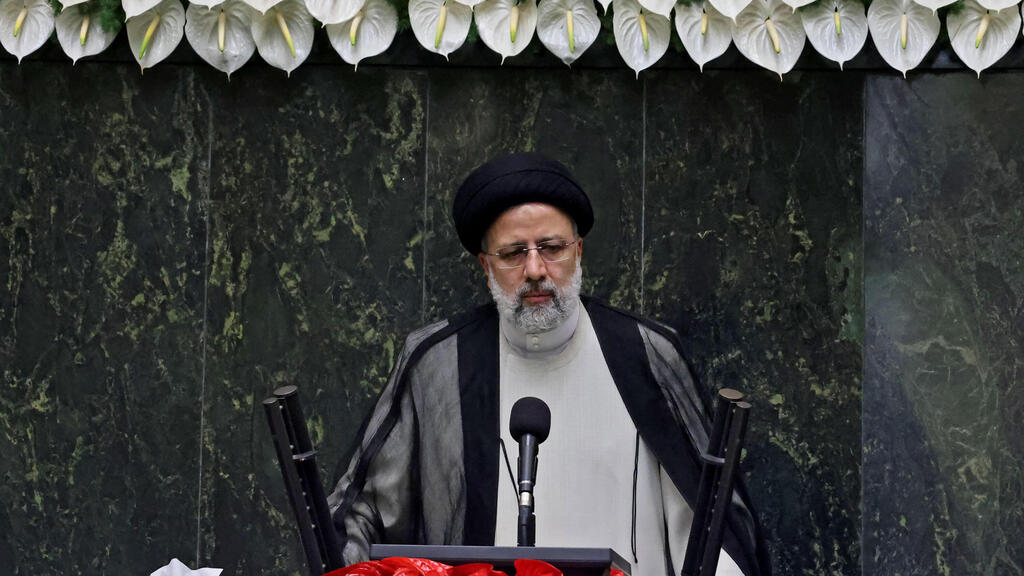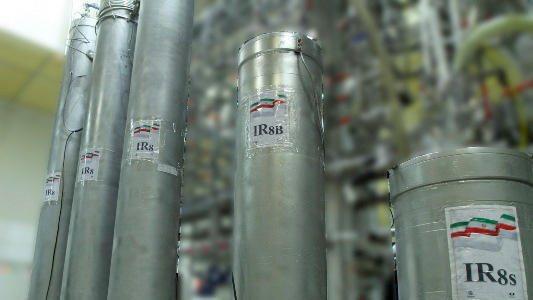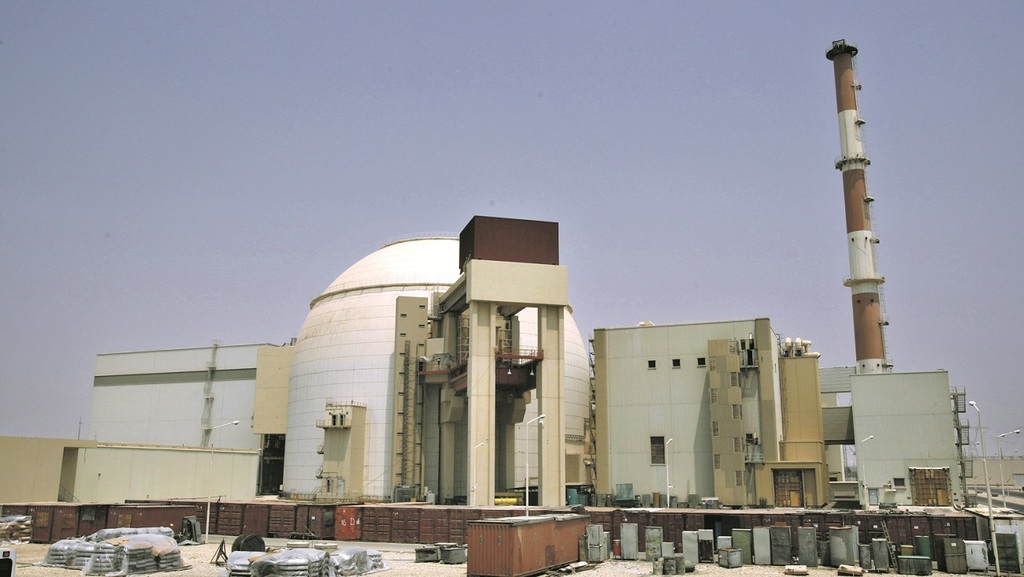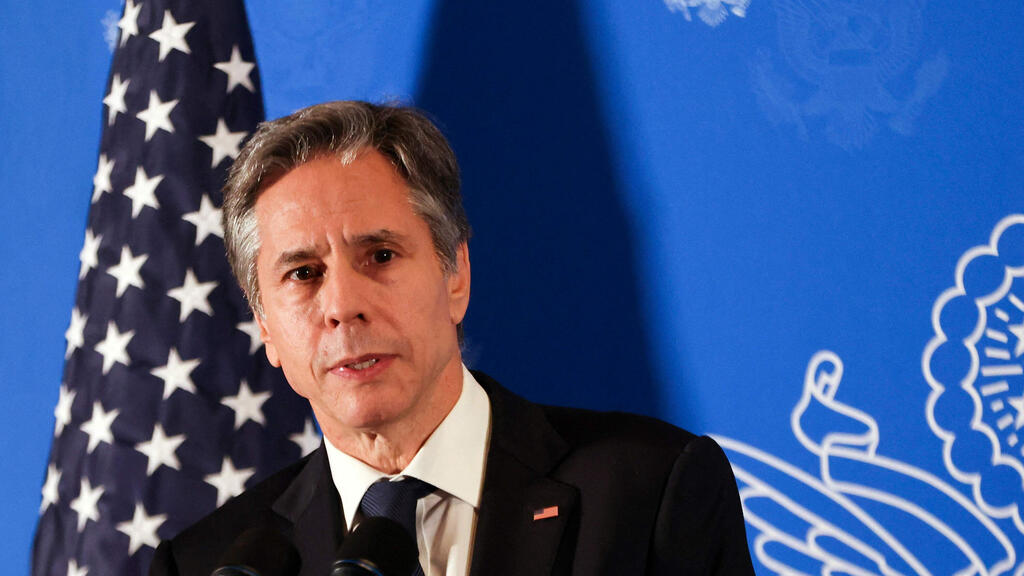Iran can enrich enough weapons-grade uranium within a month of deciding to do so, the Institute for Science and International Security estimates in a report published Monday.
The Washington-based think tank’s estimation is based on data supplied by the International Atomic Energy Agency (IAEA), the organization charged with supervising Iran’s nuclear program.
The “worst-case breakout estimate,” according to the report, is that Iran can produce enough uranium enriched to the necessary level and sufficient for one bomb in one month. Producing the fissile material needed for a second weapon would take the Islamic Republic less than three months to produce, and a third weapon would require two additional months of work.
Producing the enriched uranium needed for a weapon does not mean that Iran will have a nuclear bomb ready for use, however. A nuclear warhead will first have to be manufactured, itself a lengthy process. However, Iran is now closer to a bomb than it has ever been.
The progression of Tehran’s nuclear program “has significantly quickened in the last six months,” Col. (res.) Dr. Eran Lerman, vice president of the Jerusalem Institute for Strategy and Security, says. That, together with the effective removal of international supervision, which is now restored but without retroactive access, means the Iranian position has substantially changed.
Rafael Grossi, director general of the IAEA, “doesn’t have any ability to supervise because the Iranians won’t let him inspect retroactively” what took place when the IAEA’s access was blocked, according to Lerman. “And the implication is pretty clear: what’s done is done, and what they’ve managed to accumulate is already very substantial,” Lerman says.
In 2018, then-President Donald Trump took the US out of the Iran nuclear deal, which he had criticized harshly. The agreement, officially called the Joint Comprehensive Plan of Action (JCPOA), was reached during era of President Barack Obama, and stipulated limits and supervision to be placed on the Islamic Republic’s nuclear program, in exchange for economic sanctions relief.
Following the US withdrawal from the agreement, Iran progressed rapidly with its nuclear efforts, including developing materials required only for military use. Tehran has insisted that it does not aspire to develop nuclear weapons.
The Biden administration has expressed a desire to revive the JCPOA by returning both the US and Iran to compliance with its conditions. Tehran would then reverse its progress and the US would in turn lift economic sanctions that have been a heavy burden on the Iranian economy. However, despite months of internationally mediated negotiations in Vienna, the conditions of a revival have yet to be agreed upon.
With Iran’s nuclear program progressing rapidly, Lerman says “an understanding that the agreement has already lost its relevance has started to gain traction in Washington, I believe.”
Speaking to reporters in Germany last Wednesday, State of Secretary Antony Blinken said: “There is a point at which it would be very difficult to regain all the benefits of the JCPOA by returning to strict compliance with the JCPOA. We are not at that point yet, but it’s getting closer, and that’s why we have been very clear that the ability to rejoin the JCPOA, mutual return, mutual compliance, is not indefinite.”
Israel and other American allies in the region staunchly opposed the JCPOA when it was reached, and continue to oppose a return to the agreement “as is.”
An author of Monday’s report and head of the American think tank, former IAEA nuclear inspector David Albright, warned that Iran’s apparent rush toward nuclear capabilities is an attempt to improve its position in preparation for an expected return to negotiations, which have been on hiatus since June when Iran elected a new president. “I believe that Iran is trying to advance as much as possible to come better prepared to the negotiations … definitely, this is a negotiations tactic,” Dr. Yoel Guzansky, a senior research fellow at Tel Aviv University’s Institute for National Security Studies, says.
Guzansky adds, however, that “there is an additional layer to this, and that is the fact that Iran hasn’t forsaken its central goal which is, in my opinion, … not to acquire nuclear weaponry, but to become a nuclear threshold state.”
On the cusp of nuclear capability, but not quite armed with a bomb, Iran would be able to hold the threat over its rivals’ heads, while avoiding the harsh repercussions that would accompany actually arming itself.
4 View gallery


Iranian President, hardliner Ebrahim Raisi during his swearing in ceremony in August
(Photo: AFP)
Lerman also agrees that Iran’s efforts are directed at the negotiations table; however, he says that, ultimately, Iran is striving toward a nuclear weapon. The goal “is to dictate to the Americans an agreement that will keep the Iranian way to nuclear capabilities open, that way or the other,” he says.
At the same time, Iran drawing so close to nuclear capabilities has pushed the US and Israel to feel “dangerously with their backs against the wall,” says Lerman. A variety of options for action are on the table, and “a dramatic period lies ahead of us,” he adds.
Guzansky, looking at possible consequences, explains that at the heart of the matter are the different sensitivities of Israel and the US.
“Each of the countries defines its red lines differently based on its sensitivities, strategic sensitivities. The US is at least 10,000 km. from here, while Israel is close, a lot more vulnerable and a lot more threatened. Because of that, the Israeli red line is very different from the American one,” he says.
With this tension between the different perspectives, Israel may feel compelled to act in response to the Iranian advancement, while the US may consider that ultimate border not yet crossed.
Guzansky believes the Americans are still aiming for a revived agreement, one that may be disagreeable to Israel. Reviving the JCPOA “is still a realistic possibility,” he says, although doubts regarding Iranian seriousness are on the rise.
He recommends that “the two sides sit quietly together, behind closed doors … and discuss, talk about what to do in this eventuality, and what will be done in another.”
“It is possible that additional points of leverage, produced by different policies, will have to be created to pressure Iran into negotiations,” Guzansky said.
Article written by Daniel Sonnenfeld
Reprinted with permission from The Media Line




